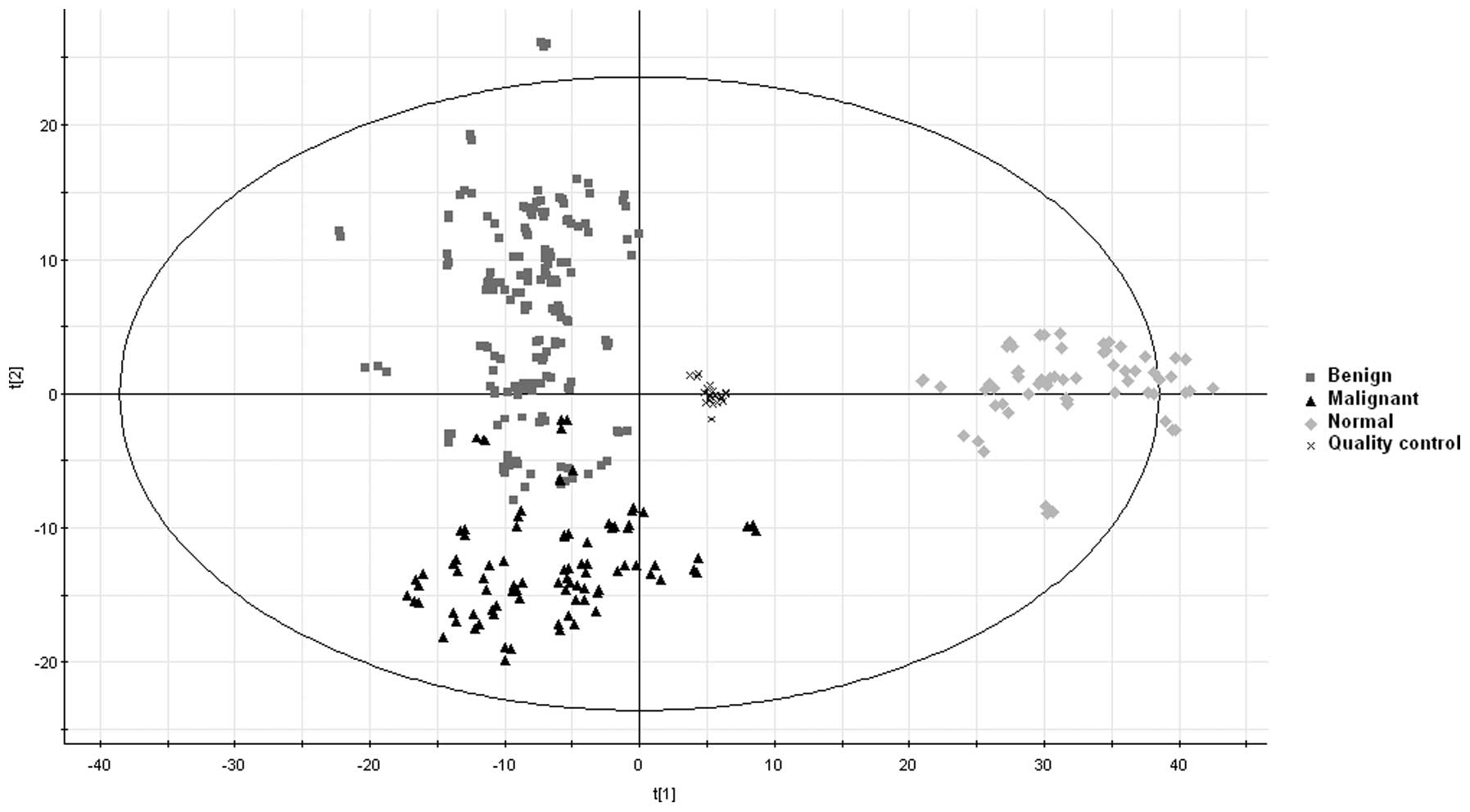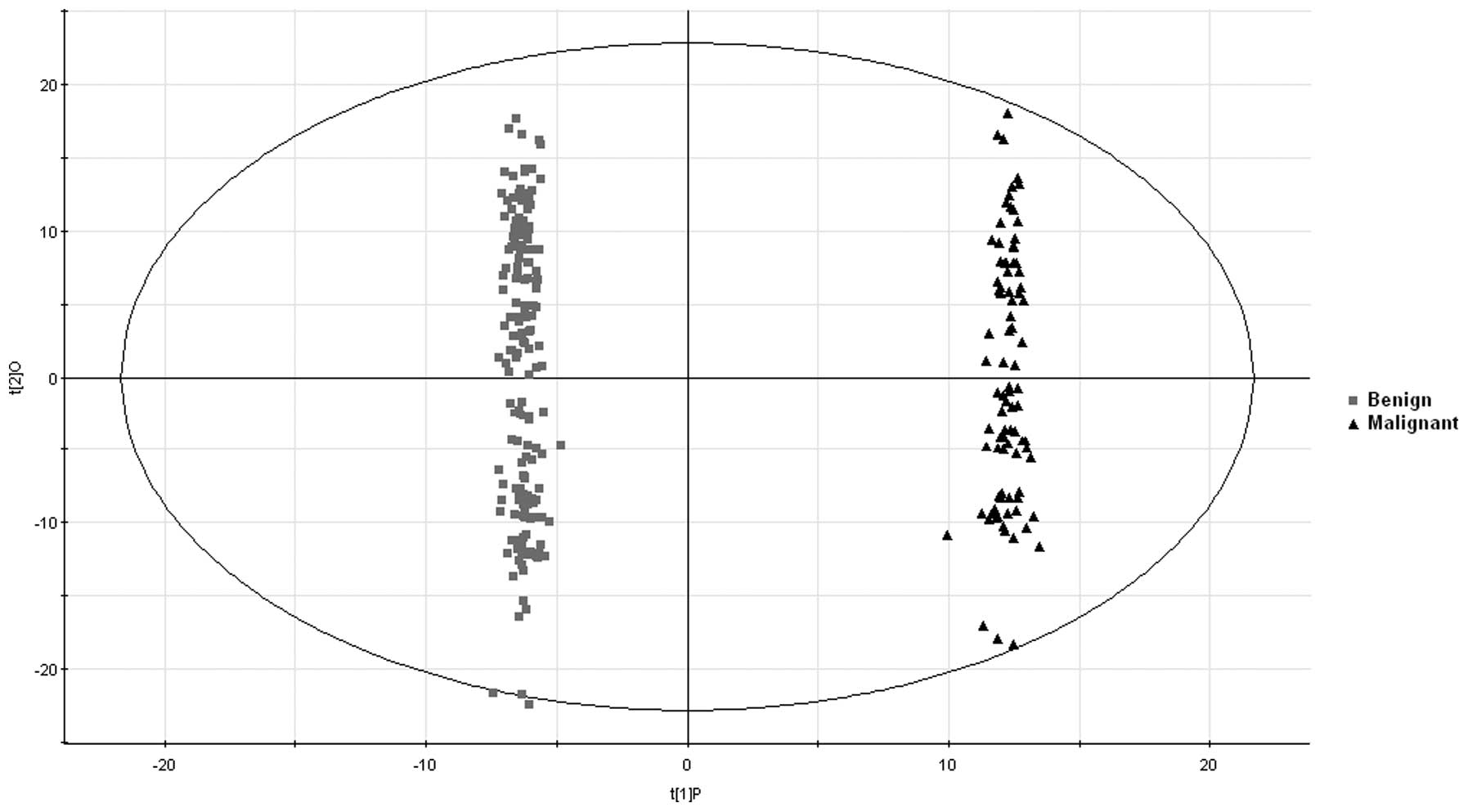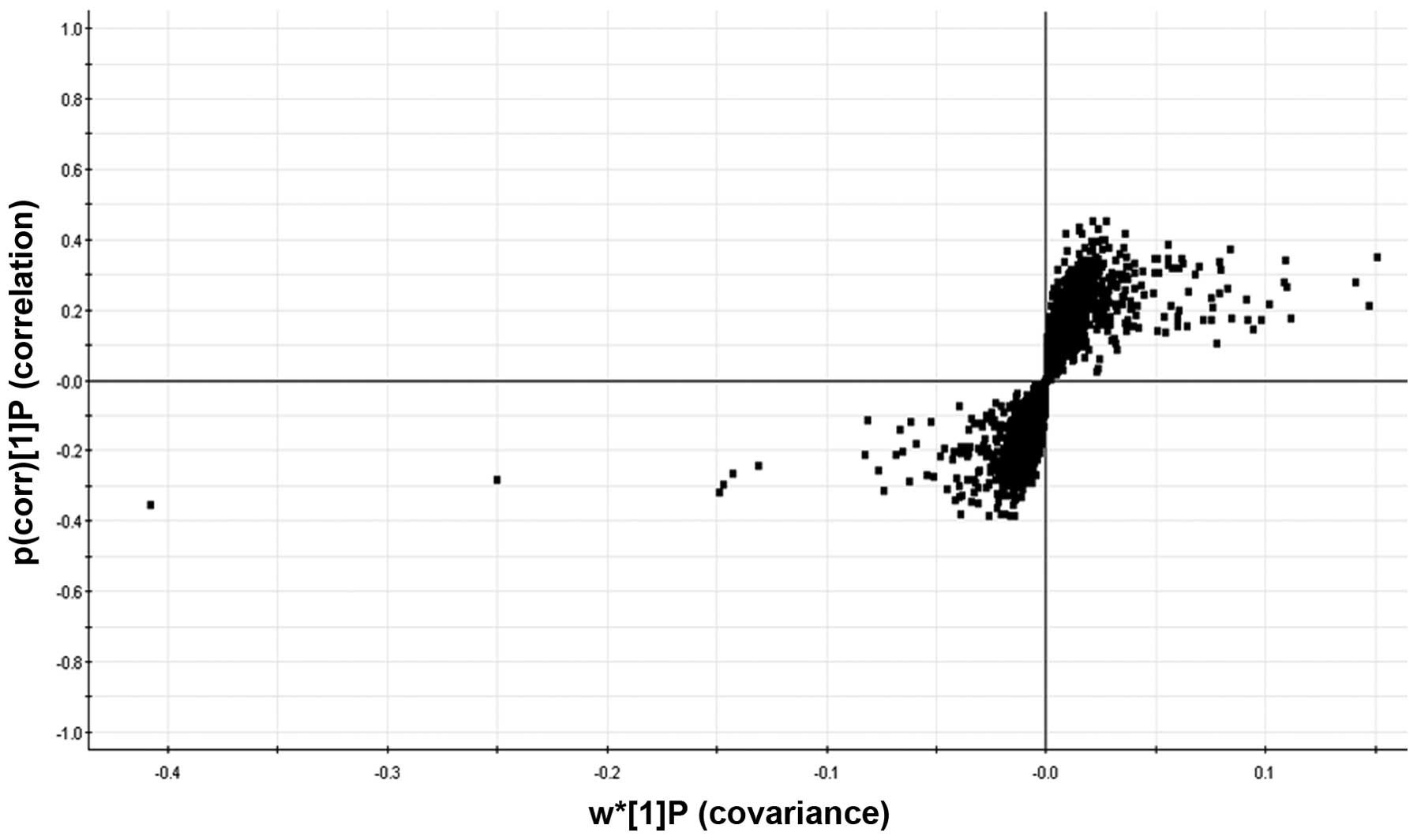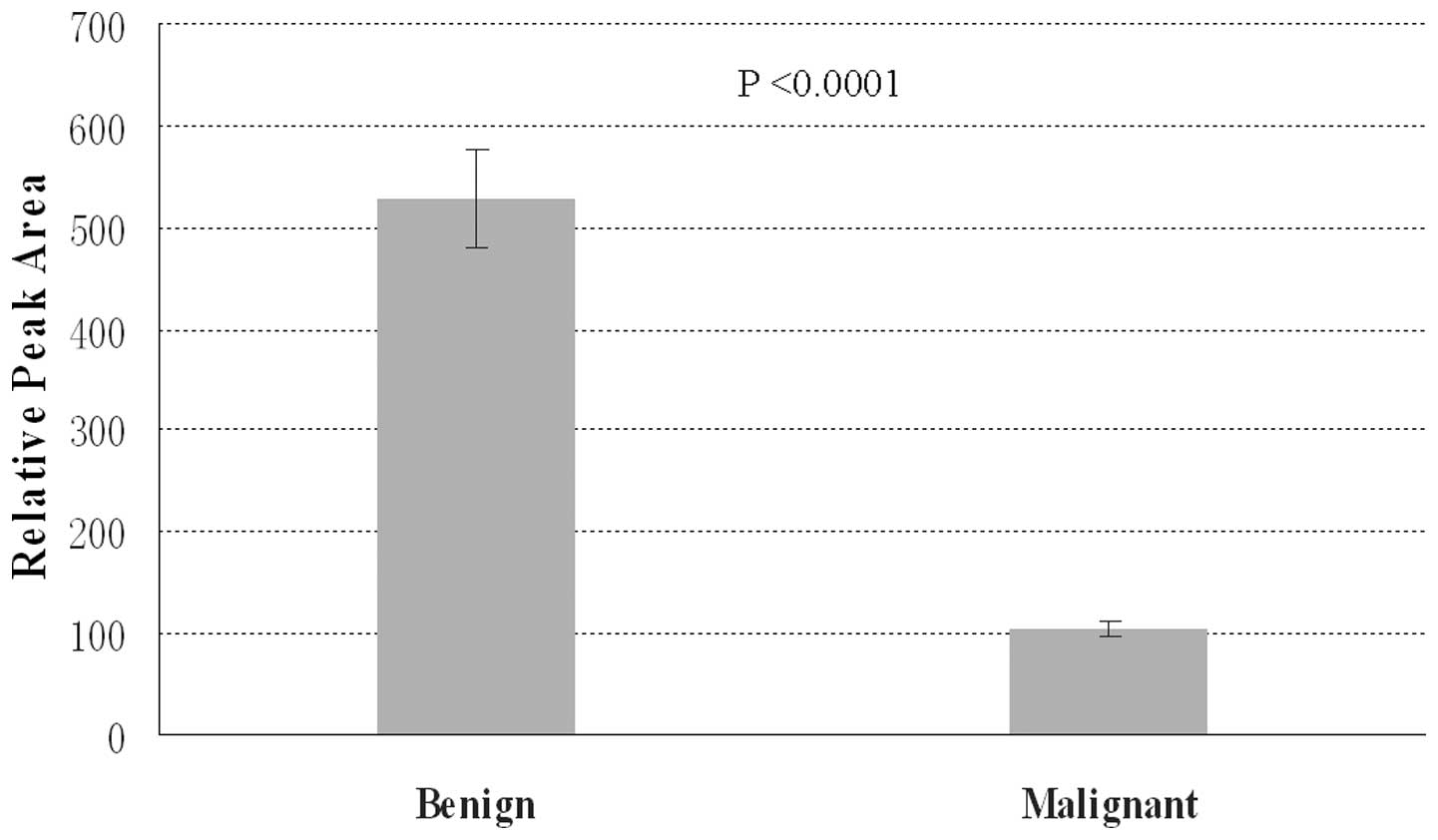|
1
|
Ravi SC and Shimul AS: Malignant biliary
disease. Sabiston Textbook of Surgery. Townsend CM, Beauchamp RD,
Evers BM, et al: Saunders Elsevier; Philadelphia, PA: 2007
|
|
2
|
Taylor-Robinson SD, Toledano MB, Arora S,
et al: Increase in mortality rates from intrahepatic
cholangiocarcinoma in England and Wales 1968–1998. Gut. 48:816–820.
2001. View Article : Google Scholar : PubMed/NCBI
|
|
3
|
Patel T: Worldwide trends in mortality
from biliary tract malignancies. BMC Cancer. 2:102002. View Article : Google Scholar : PubMed/NCBI
|
|
4
|
Khan SA, Taylor-Robinson SD, Toledano MB,
et al: Changing international trends in mortality rates for liver,
biliary and pancreatic tumours. J Hepatol. 37:806–813. 2002.
View Article : Google Scholar : PubMed/NCBI
|
|
5
|
Shaib Y and El-Serag HB: The epidemiology
of cholangiocarcinoma. Semin Liver Dis. 24:115–125. 2004.
View Article : Google Scholar : PubMed/NCBI
|
|
6
|
Khan SA, Thomas HC, Davidson BR and
Taylor-Robinson SD: Cholangiocarcinoma. Lancet. 366:1303–1314.
2005. View Article : Google Scholar : PubMed/NCBI
|
|
7
|
Ueno N, Sano T, Kanamaru T, et al:
Adenosquamous cell carcinoma arising from the papilla major. Oncol
Rep. 9:317–320. 2002.PubMed/NCBI
|
|
8
|
Matsumoto A, Imamura M, Akagi Y, et al: A
case report of disseminated recurrence of inferior bile duct
carcinoma in PTCD fistula. Kurume Med J. 49:71–75. 2002. View Article : Google Scholar : PubMed/NCBI
|
|
9
|
Patel AH, Harnois DM, Klee GG, LaRusso NF
and Gores GJ: The utility of CA19-9 in the diagnoses of
cholangiocarcinoma in patients without primary sclerosing
cholangitis. Am J Gastroenterol. 95:204–207. 2000. View Article : Google Scholar : PubMed/NCBI
|
|
10
|
Perkins GL, Slater ED, Sanders GK and
Prichard JG: Serum tumor markers. Am Fam Physician. 68:1075–1082.
2003.PubMed/NCBI
|
|
11
|
Carpelan-Holmström M, Louhimo J, Stenman
UH, Alfthan H and Haglund C: CEA, CA 19-9 and CA 72-4 improve the
diagnostic accuracy in gastrointestinal cancers. Anticancer Res.
22:2311–2316. 2002.PubMed/NCBI
|
|
12
|
Harewood GC, Baron TH, Stadheim LM, et al:
Prospective, blinded assessment of factors influencing the accuracy
of biliary cytology interpretation. Am J Gastroenterol.
99:1464–1469. 2004. View Article : Google Scholar : PubMed/NCBI
|
|
13
|
Malhi H and Gores GJ: Review article: the
modern diagnosis and therapy of cholangiocarcinoma. Aliment
Pharmacol Ther. 23:1287–1296. 2006. View Article : Google Scholar : PubMed/NCBI
|
|
14
|
Wua H, Xue R, Lub C, et al: Metabolomic
study for diagnostic model of oesophageal cancer using gas
chromatography/mass spectrometry. J Chromatogr B Analyt Technol
Biomed Life Sci. 877:3111–3117. 2009. View Article : Google Scholar
|
|
15
|
Wu H, Xue R, Dong L, et al: Metabolomic
profiling of human urine in hepatocellular carcinoma patients using
gas chromatography/mass spectrometry. Anal Chim Acta. 648:98–104.
2009. View Article : Google Scholar : PubMed/NCBI
|
|
16
|
Bogdanov M, Matson WR, Wang L, et al:
Metabolomic profiling to develop blood biomarkers for Parkinson’s
disease. Brain. 131:389–396. 2008. View Article : Google Scholar : PubMed/NCBI
|
|
17
|
Goodacre R, Vaidyanathan S, Dunn WB,
Harrigan GG and Kell DB: Metabolomics by numbers: acquiring and
understanding global metabolite data. Trends Biotechnol.
22:245–252. 2004. View Article : Google Scholar : PubMed/NCBI
|
|
18
|
Claudino WM, Quattrone A, Biganzoli L, et
al: Metabolomics: available results, current research projects in
breast cancer, and future applications. J Clin Oncol. 25:2840–2846.
2007. View Article : Google Scholar : PubMed/NCBI
|
|
19
|
Chen F, Xue J, Zhou L, Wu S and Chen Z:
Identification of serum biomarkers of hepatocarcinoma through
liquid chromatography/mass spectrometry-based metabonomic method.
Anal Bioanal Chem. 401:1899–1904. 2011. View Article : Google Scholar : PubMed/NCBI
|
|
20
|
OuYang D, Xu J, Huang H and Chen Z:
Metabolomic profiling of serum from human pancreatic cancer
patients using 1 H NMR spectroscopy and principal component
analysis. Appl Biochem Biotechnol. 165:148–154. 2011. View Article : Google Scholar : PubMed/NCBI
|
|
21
|
Lu N, Wei D, Chen F and Yang ST: Lipidomic
profiling and discovery of lipid biomarkers in snow alga
Chlamydomonas nivalis under salt stress. Eur J Lipid Sci Technol.
114:253–265. 2012. View Article : Google Scholar
|
|
22
|
Yan XJ, Xu JL, Chen JJ, et al: Lipidomics
focusing on serum polar lipids reveals species dependent stress
resistance of fish under tropical storm. Metabolomics. 8:299–309.
2012. View Article : Google Scholar
|
|
23
|
Wiklund S, Johansson E, Sjöström L, et al:
Visualization of GC/TOF-MS based metabolomics data for
identification of biochemically interesting compounds using OPLS
class models. Anall Chem. 80:115–122. 2008. View Article : Google Scholar
|
|
24
|
Chen DY, Yan XJ, Xu JL, et al: Lipidomic
profiling and discovery of lipid biomarkers in Stephanodiscus sp
under cold stress. Metabolomics. 9:949–959. 2013. View Article : Google Scholar
|
|
25
|
Zhang X, Choi FF, Zhou Y, et al:
Metabolite profiling of plasma and urine from rats with
TNBS-induced acute colitis using UPLC-ESI-QTOF-MS-based
metabonomics - a pilot study. FEBS J. 279:2322–2338. 2012.
View Article : Google Scholar : PubMed/NCBI
|
|
26
|
Liu YT, Jia HM, Chang X, et al: Metabolic
pathways involved in Xin-Ke-Shu protecting against myocardial
infarction in rats using ultra high-performance liquid
chromatography coupled with quadrupole time-of-flight mass
spectrometry. J Pharm Biomed Anal. 90:35–44. 2014. View Article : Google Scholar
|
|
27
|
Harewood GC, Baron TH, Stadheim LM, et al:
Prospective, blinded assessment of factors influencing the accuracy
of biliary cytology interpretation. Am J Gastroenterol.
99:1464–1469. 2004. View Article : Google Scholar : PubMed/NCBI
|
|
28
|
Malhi H and Gores GJ: Review article: the
modern diagnosis and therapy of cholangiocarcinoma. Aliment
Pharmacol Ther. 23:1287–1296. 2006. View Article : Google Scholar : PubMed/NCBI
|
|
29
|
de Bellis M, Fogel EL, Sherman S, et al:
Influence of stricture dilation and repeat brushing on the cancer
detection rate of brush cytology in the evaluation of malignant
biliary obstruction. Gastrointest Endosc. 58:176–182. 2003.
View Article : Google Scholar : PubMed/NCBI
|
|
30
|
Mahmoudi N, Enns R, Amar J, et al: Biliary
brush cytology: factors associated with positive yields on biliary
brush cytology. World J Gastroenterol. 14:569–573. 2008. View Article : Google Scholar : PubMed/NCBI
|
|
31
|
Dunn WB, Bailey NJ and Johnson HE:
Measuring the metabolome: current analytical technologies. Analyst.
130:606–625. 2005. View
Article : Google Scholar : PubMed/NCBI
|
|
32
|
Wilson ID, Plumb R, Granger J, et al:
HPLC-MS-based methods for the study of metabonomics. J Chromatogr B
Analyt Technol Biomed Life Sci. 817:67–76. 2005. View Article : Google Scholar : PubMed/NCBI
|
|
33
|
Wen H, Yoo SS, Kang J, et al: A new
NMR-based metabolomics approach for the diagnosis of biliary tract
cancer. J Hepatol. 52:228–233. 2010. View Article : Google Scholar
|
|
34
|
Sharif AW, Williams HR, Lampejo T, et al:
Metabolic profiling of bile in cholangiocarcinoma using in vitro
magnetic resonance spectroscopy. HPB (Oxford). 12:396–402. 2010.
View Article : Google Scholar
|
|
35
|
AbdAlla MSH, Taylor-Robinson SD, Sharif
AW, et al: Differences in phosphatidylcholine and bile acids in
bile from Egyptian and UK patients with and without
cholangiocarcinoma. HPB (Oxford). 13:385–390. 2011. View Article : Google Scholar
|
|
36
|
Helmberger H, Hellerhoff K, Rüll T and
Rösch T: Chronic infections of the biliary system. Radiologe.
40:530–536. 2000.(In German). View Article : Google Scholar : PubMed/NCBI
|
|
37
|
Albiin N, Smith IC, Arnelo U, et al:
Detection of cholangiocarcinoma with magnetic resonance
spectroscopy of bile in patients with and without primary
sclerosing cholangitis. Acta Radiol. 49:855–862. 2008. View Article : Google Scholar : PubMed/NCBI
|
|
38
|
Billah M and Anthes J: The regulation and
cellular functions of phosphatidylcholine hydrolysis. Biochem J.
269:281–291. 1990.PubMed/NCBI
|
|
39
|
van Helvoort A, Smith A, Sprong H, et al:
MDR1 P-glycoprotein is a lipid translocase of broad specificity,
while MDR3 P-glycoprotein specifically translocates
phosphatidylcholine. Cell. 87:507–517. 1996. View Article : Google Scholar : PubMed/NCBI
|
|
40
|
Barrios JM and Lichtenberger LM: Role of
biliary phosphatidylcholine in bile acid protection and NSAID
injury of the ileal mucosa in rats. Gastroenterology.
118:1179–1186. 2000. View Article : Google Scholar : PubMed/NCBI
|
|
41
|
Komichi D, Tazuma S, Nishioka T, et al:
Unique inhibition of bile salt-induced apoptosis by lecithins and
cytoprotective bile salts in immortalized mouse cholangiocytes. Dig
Dis Sci. 48:2315–2322. 2003. View Article : Google Scholar
|
|
42
|
Komichi D, Tazuma S, Nishioka T, et al:
Glycochenodeoxycholate plays a carcinogenic role in immortalized
mouse cholangiocytes via oxidative DNA damage. Free Radic Biol Med.
39:1418–1427. 2005. View Article : Google Scholar : PubMed/NCBI
|
|
43
|
Alpini G, Invernizzi P, Gaudio E, et al:
Serotonin metabolism is dysregulated in cholangiocarcinoma, which
has implications for tumor growth. Cancer Res. 68:9184–9193. 2008.
View Article : Google Scholar : PubMed/NCBI
|
|
44
|
Zhang A, Sun H, Han Y, et al: Exploratory
urinary metabolic biomarkers and pathways using UPLC-Q-TOF-HDMS
coupled with pattern recognition approach. Analyst. 137:4200–4208.
2012. View Article : Google Scholar : PubMed/NCBI
|
|
45
|
Yang S, Minkler P and Hoppel C:
cis-3,4-Methylene-heptanoylcarnitine: characterization and
verification of the C8:1 acylcarnitine in human urine. J Chromatogr
B Analyt Technol Biomed Life Sci. 857:251–258. 2007. View Article : Google Scholar : PubMed/NCBI
|
|
46
|
Trauner M, Fickert P and Wagner M: MDR3
(ABCB4) defects: a paradigm for the genetics of adult cholestatic
syndromes. Semin Liver Dis. 27:77–98. 2007. View Article : Google Scholar : PubMed/NCBI
|
|
47
|
Mauad TH, van Nieuwkerk CM, Dingemans KP,
et al: Mice with homozygous disruption of the mdr2 P-glycoprotein
gene. A novel animal model for studies of nonsuppurative
inflammatory cholangitis and hepatocarcinogenesis. Am J Pathol.
145:1237–1245. 1994.PubMed/NCBI
|
|
48
|
Saintigny Y, Dumay A, Lambert S and Lopez
B: A novel role for the Bcl-2 protein family: specific suppression
of the RAD51 recombination pathway. EMBO J. 20:2596–2607. 2001.
View Article : Google Scholar : PubMed/NCBI
|















